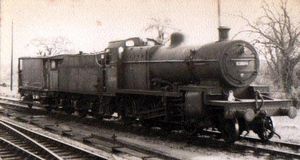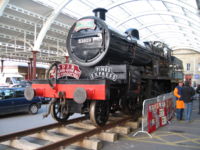S&DJR 7F 2-8-0
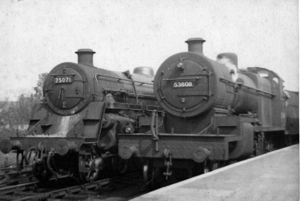
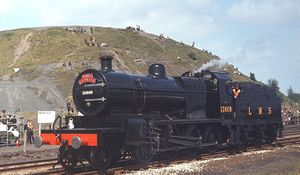
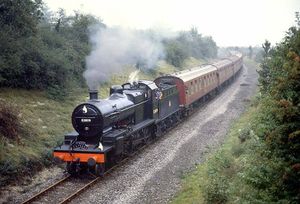
The Somerset and Dorset Joint Railway (S&DJR) 7F 2-8-0 is a class of steam locomotive designed for heavy freight. 11 were built in two batches in 1914 and 1925 and two are preserved.
Overview
The Midland Railway, joint owners of the S&DJR with the LSWR were in charge of locomotive policy on the line. The S&DR which was highly graded and required power over and above what was available from the Midland's small engines. M.H. Ryan, S&DJR locomotive superintendent argued for a type specific to the line.
Two plans for 0-8-0s were suggested in 1907 but would have been too heavy. Clearly a special exception to the small engine policy, James Clayton the draughtsman at Derby was given a free hand to design the engine, and produced something unlike any other Derby-designed locomotive of the time.
The design used the G9AS boiler from the Midland Compounds, with a Belpaire firebox and Walschaert valve gear. A leading truck was added, to distribute the weight, making it a 2-8-0. The cylinders were mounted high on the frame, and sloped, to avoid fouling platforms. Because of the gradients that the loco would face, Clayton provided two steam brake cylinders on the engine and a further one on the tender. The Derby standard axle boxes were fitted, so the engines were still subject to the hot boxes that were a fact of life on the Midland.
Six were built in 1914 and numbered 80-5 by the S&DJR. In 1925 an additional 5 were ordered from Robert Stephenson and Hawthorne in Doncaster and built with the larger G9BS boilers, becoming numbers 86-90. These engines gradually acquired the G9AS type however.
Their success on the Mendip hills prompted the Midland to try them on the East Midlands coal trains, but they were not so satisfactory. They were, after all, designed for climbing hills, but perhaps the reasons were fuel efficiency, for they consumed considerable amounts of high quality coal.
The S&DJR locos were taken into LMS stock in 1928, and renumbered 9670-80 in 1930 and 13800-10 in 1932. On nationalisation in 1948 British Railways added 40000 to their numbers making them 53800-10.
Withdrawals of the 1914-built locomotives occurred between 1959 and 1962 and the 1925-built engines between 1963-1964.
Preservation
Two have survived, 88 (9678/13808/53808) on the West Somerset Railway, and 89 (9679/13809/53809)at the Midland Railway Butterley. No. 88 returned to service in December 2005 and is painted in S&DJR blue livery, which it never carried in service. No. 89 was resteamed in January 2006, in BR Black Livery, with Late Crest, and entered service in early February at the Midland Railway Butterley.
Both met for the first time in preservation at the West Somerset Railway during the next month, after No. 89 made a return to Bath Green Park Station over March 5th and 6th 2006, 40 years after the S&D closed.
